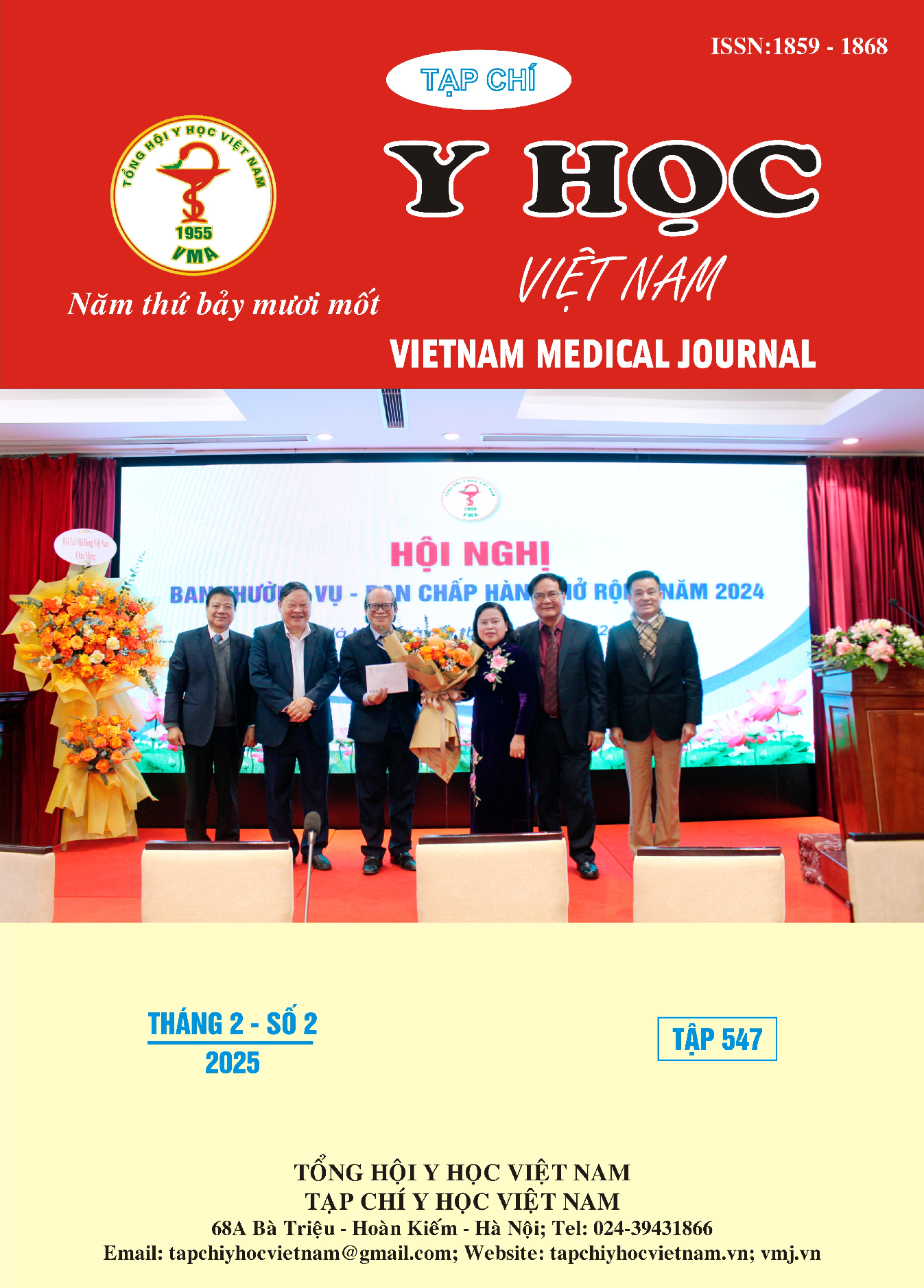BÍT THÔNG LIÊN THẤT PHẦN QUANH MÀNG BẰNG DỤNG CỤ HAI ĐĨA ĐỒNG TÂM
Nội dung chính của bài viết
Tóm tắt
Đặt vấn đề: Thông liên thất là bệnh lý tim bẩm sinh phổ biến. Phương pháp bít lỗ thông liên thất bằng dụng cụ hai đĩa đồng tâm đã được phát triển với mục tiêu nâng cao hiệu quả điều trị và giảm thiểu các biến chứng so với các dụng cụ truyền thống. Mục tiêu: Mô tả thủ thuật bít thông liên thất phần quanh màng bằng dụng cụ hai đĩa đồng tâm. Phương pháp nghiên cứu: Nghiên cứu mô tả tiến cứu được thực hiện tại Bệnh viện Tim Hà Nội trên 81 bệnh nhân được chẩn đoán thông liên thất phần quanh màng. Các thông tin lâm sàng, cận lâm sàng và quá trình can thiệp được thu thập. Các chỉ số được ghi nhận bao gồm áp lực động mạch phổi, mức độ shunt trái-phải (Qp/Qs), cỡ dụng cụ sử dụng, thời gian thực hiện thủ thuật và các biến chứng gặp phải trong quá trình điều trị. Phân tích số liệu được thực hiện bằng phần mềm SPSS 20.0. Kết quả: Các triệu chứng lâm sàng thường gặp bao gồm viêm phế quản tái diễn (33,3%) và chậm tăng cân (25,9%), với tiếng thổi tâm thu ≥ 3/6 ghi nhận ở 80,2% bệnh nhân. Áp lực động mạch phổi trung bình là 27,4 mmHg, mức Qp/Qs trung bình là 2,3. Trong thủ thuật, cỡ dụng cụ phổ biến nhất được sử dụng là 5 mm (30,9%) và 6 mm (27,2%). Thời gian làm thủ thuật trung bình là 47,3 phút, với tỷ lệ thành công cao. Một số khó khăn như rơi dụng cụ, bắt lại snare hoặc đổi dụng cụ lớn hơn đều được xử lý thành công. Kết luận: Phương pháp này cho thấy tính an toàn, hiệu quả và khả năng áp dụng rộng rãi trong thực hành lâm sàng, đồng thời cung cấp thêm bằng chứng về vai trò của dụng cụ trong điều trị bệnh lý tim bẩm sinh.
Chi tiết bài viết
Từ khóa
Thông liên thất, dụng cụ hai đĩa đồng tâm, shunt trái-phải, áp lực động mạch phổi, bệnh tim bẩm sinh.
Tài liệu tham khảo
2. Daniel NLM, Gutgesell HP. Ventricular Septal Defects. Moss and Adams' Heart Disease in Infants, Children and Adolescents Lippincott Williams and Wilkins; 2008:667-682:chap 32.
3. Ronas RA, Dinardo J, Laussen PS, Howe R, Lapierre R, Matte G. Ventricular Septal Defect. Comprehensive Surgical Management of Congenital Heart Disease. Hodder Arnold; 2004:242-254:chap 14.
4. Trong-Phi L. Closure of VSDs - PFM coil. Percutaneous Interventions for Congenital Heart Disease. Informa healthcare; 2007:357-62.
5. Hiếu NL, Hùng PM, Quang NN, et al. Thông tim can thiệp điều trị bệnh tim bẩm sinh ở Viện Tim mạch Quốc gia Việt Nam. Tạp chí Tim mạch học Việt Nam. 2003;36:tr 7-16.
6. Nguyen HL, Phan QT, Dinh LH, et al. Nit-Occlud Le VSD coil versus Duct Occluders for percutaneous perimembranous ventricular septal defect closure. Congenit Heart Dis. Jul 2018;13(4):584-593. doi:10.1111/chd.12613
7. Haas NA, Kock L, Bertram H, et al. Interventional VSD-Closure with the Nit-Occlud(R) Le VSD-Coil in 110 Patients: Early and Midterm Results of the EUREVECO-Registry. Pediatr Cardiol. Nov 15 2016;doi:10.1007/s00246-016-1502-8
8. Wang L, Cao S, Li J, et al. Transcatheter closure of congenital perimembranous ventricular septal defect in children using symmetric occluders: an 8-year multiinstitutional experience. Ann Thorac Surg. Aug 2012;94(2):592-8. doi:10. 1016/j.athoracsur.2012.03.067


